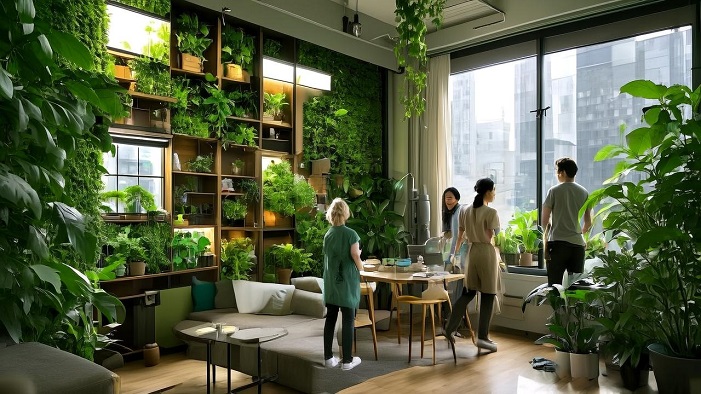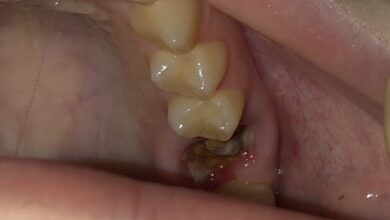The Symbiotic Apartment: How AI-Generated Micro-Ecologies Are Redefining Urban Living’s Health and Happiness

The urban apartment, often a bastion of steel and concrete, is on the cusp of a profound transformation. Beyond smart thermostats and voice assistants, a silent revolution is brewing: the emergence of AI-generated micro-ecologies. This isn’t just about adding a few potted plants; it’s about intelligent systems autonomously designing, cultivating, and nurturing intricate, living environments within our homes, fundamentally reshaping our health, mood, and connection to nature in the densest urban landscapes.
Imagine your living space as a perpetually optimized mini-biosphere, an invisible network of AI-managed life forms working in harmony to purify your air, balance your mood, and even provide hyper-local, personalized sustenance. This speculative future moves beyond passive biophilic design to active, responsive biological integration.
Beyond Smart Homes: The AI as an Ecological Architect
For years, AI in smart homes has focused on convenience: automating lights, controlling entertainment, optimizing energy. The next frontier involves AI becoming an ecological architect – an unseen hand guiding complex biological systems within our personal spaces.
This concept revolves around miniature, self-regulating ecosystems where AI plays a central role in:
- Atmospheric Alchemy: Beyond simple air purifiers, an AI could manage a dynamically evolving array of air-purifying plants (e.g., peace lilies, snake plants, spider plants) and even specialized microbial cultures. Sensors would constantly monitor VOCs, CO2 levels, humidity, and allergens. The AI would precisely control light, water, and nutrient delivery to these plants, ensuring peak efficiency in toxin removal. It could even rotate plant species based on seasonal allergen peaks or specific indoor pollution sources.
- Mood-Responsive Bio-Lighting: Integrating specific plant species that respond to light cues, coupled with AI-controlled LED spectrums, could create dynamic “living light” installations. The AI, sensing your mood through wearables or vocal cues, might subtly shift the light and plant “behavior” (e.g., leaf expansion, slight movements) to foster calm, focus, or energy, seamlessly blending biophilic aesthetics with mood regulation.
- Personalized Nutrient Production Pods: Imagine compact, AI-managed hydroponic or aeroponic pods integrated into your kitchen or living area. These aren’t just generic indoor farms; the AI could select and cultivate specific microgreens, herbs, or even small fruits tailored to your dietary needs, health goals, or taste preferences, minimizing food miles to mere feet. The AI would precisely manage nutrient solutions, pH levels, and light cycles for optimal yield and nutritional content.
- Symbiotic Microbial Environments: Highly advanced systems could even cultivate beneficial microbial populations within specialized filters or surfaces, influencing indoor air microbiome for enhanced immunity and reduced airborne pathogens, all managed and balanced by the AI.
The Invisible Steward: How AI Nurtures Your Micro-Ecology
The key differentiator here is the AI’s role as a proactive, intelligent steward rather than just a remote control.
- Real-time Optimization: The AI constantly collects data from a myriad of embedded sensors (air quality, light spectrum, plant health, water levels, nutrient absorption). It then uses machine learning to analyze these streams, identifying subtle changes and predicting future needs.
- Autonomous Intervention: If a plant is showing signs of nutrient deficiency, the AI adjusts the nutrient solution. If air quality dips, it activates specific plant cycles or ventilation. If a new allergen is detected, it might prioritize plants known to filter that specific particle.
- Self-Correction and Learning: Over time, the AI learns the unique dynamics of your apartment’s microclimate and your preferences. It adapts its strategies, potentially even experimenting with new plant combinations or growth parameters to achieve optimal well-being outcomes for the occupants.
- Minimal Human Oversight: While you remain the beneficiary, the AI handles the intricate biological management, freeing you from the complexities of plant care while maximizing the benefits of living nature.
The Urban Oasis: Redefining Health and Happiness
The integration of AI-generated micro-ecologies promises a future where urban living is no longer synonymous with a disconnect from nature. Instead, it offers:
- Enhanced Well-being: Continuous purification of air, exposure to living greenery, and mood-adaptive environments directly contribute to improved physical and mental health.
- Sustainable Living: Reduced reliance on external food sources, optimized resource use (water, energy), and natural air purification contribute to a smaller ecological footprint.
- Biophilic Connection: A seamless, integrated living environment fosters an innate sense of connection to nature, even amidst the concrete jungle.
- Hyper-Personalized Environments: Your apartment becomes a living entity, subtly tailored to your specific needs and preferences by an intelligent, invisible hand.
While still largely in the realm of advanced research and speculative design, the vision of the symbiotic apartment, governed by AI-generated micro-ecologies, presents a compelling blueprint for the future of urban health and happiness – where our homes don’t just house us, but actively nurture us, guided by the silent wisdom of artificial intelligence.





